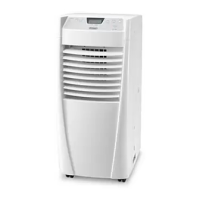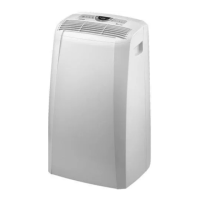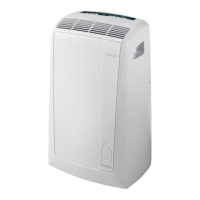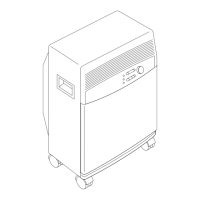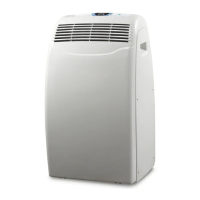English
TO DISCONNECT
- Shut off the air conditioning unit and unplug the unit from
the power outlet.
- Wait five minutes for line pressures to equalize.
- Disconnect the auxiliary electrical and condensate lines, if
applicable.
- On couplings equipped with spring loaded locking pins,
depress the pin until it clears the coupling handle is pulled
up. When the handle clears the locking pin, pull coupling
handle to its “full back” position (see Figure 3).
- Retract the spring loaded release sleeve on the female
and remove the male half (see Figure 5).
- Install the caps on both halves, if provided. Close the
handle on female half after installing the cap.
DO’S AND DON’T’S
- Thoroughly check the coupling for proper position of seal
(see Figure 1), missing seals, leaking valves, debris,
proper mounting, or other damage prior to reinstalling and
restarting the air conditioner. Don’t use a damaged
coupling.
- Always keep the couplings connected even when the
system is not in use in order to minimize refrigerant
effusion, coupling damage and the entry of dirt or other
foreign material. If it is not possible to keep the
couplings connected, then both halves should be capped
immediatly upon disconnection with the optional caps as
shows in Figures 6 & 7
.
- Don’t tamper with the valves while disconnected or allow
children access to disconnected couplings.
- Don’t drop coupling half on any hard surfaces. The male
half is made of brass and if allowed to drop may become
d
amaged beyond the point where it can be reconnected.
Installing caps immediatly after disconnection will
minimize the possibility of damage if dropped.
- Do not open the coupling handle while the air conditioning
unit is operating. After shutting off the air conditioning
unit,
wait five minutes before opening the coupling in order to
equalize line pressures. Opening the coupling during
airconditioner operation may damage the compressor
.
Fig. 6
Fig. 7
CONNECTION OF THE UNIT
I
The length of the pipe connecting the internal unit to the
external one is 4 m.
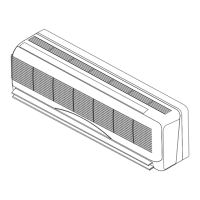
